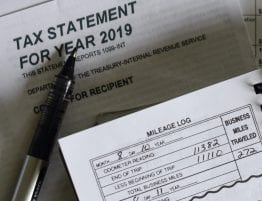
2023 Tax Credit Updates
When it comes to managing your taxes, tax credits can be a powerful tool in reducing your overall tax burden. By qualifying for one or more tax credits, you can lower the amount of taxes you owe or even receive a refund.
It’s important to note that in order to claim these tax credits, filing a tax return is mandatory. Even if you find yourself not having any tax liability, filing a return can still enable you to claim credits and potentially receive a refund.
While tax credits offer benefits for everyone, it’s worth mentioning that many of these credits are specifically designed to support middle and low-income individuals and families, aiming to alleviate their tax responsibilities.
However, it’s crucial to understand that each tax credit has its own set of qualifying factors, which must be considered. As we navigate through 2023, now is the perfect time to assess your eligibility for the five major tax credits and take advantage of them.
The 2022 tax filing deadline has passed, so it is essential that you know what your options are and act quickly. If you’re ready to tackle your back taxes today, schedule your free consultation now.
1 – EARNED INCOME TAX CREDIT
One of the most substantial credits for taxpayers is the Earned Income Tax Credit. Established in 1975–partly to offset the burden of Social Security taxes and provide an incentive to work–the EITC is determined by income and is phased in according to filing status: single, married, filing jointly, or either of those with children. Eligibility and the amount of the credit are based on adjusted gross income, earned income, and investment income.
You won’t qualify for the EITC if:
- You’re married and filing separately.
- You earned $3,600 or more in 2019 from investment income. That is considered “disqualified income,” and you cannot qualify for the credit.
- If you may be claimed as a dependent on another filer’s tax return, you do not qualify.
To be eligible for the Earned Income Tax Credit (EITC), certain criteria must be met:
- A person must be at least 25 years old and younger than 65 to qualify.
- If married, both spouses must have valid Social Security numbers and have lived in the country for over six months.
- You must have worked and earned income below $59,187 in the tax year 2022.
- Your investment income should be below $10,000 for the same tax year.
- You need to possess a valid Social Security number, including extensions, by the due date of your 2022 return.
- You must be a U.S. citizen or a resident alien throughout the year.
- You should not file Form 2555, which pertains to foreign-earned income.
If you meet the requirements for this credit, the maximum amount you could potentially receive varies based on the number of qualifying children:
- If you have no dependent children, the maximum amount is $560.
- If you have one qualifying child, the maximum amount is $3,733.
- If you have two qualifying children, the maximum amount is $6,164.
- If you have three or more qualifying children, the maximum amount is $6,935.
If you’re self-employed, you may qualify for the EITC. Tax experts recommend you check your eligibility every year, even if you think you won’t qualify.
2 – AMERICAN OPPORTUNITY TAX CREDIT
For years, the Hope Credit helped families pay higher education costs. Since 2009, that credit has been rebranded and expanded as the American Opportunity Tax Credit.
AOTC is a credit designed to alleviate qualified education expenses incurred for an eligible student during the initial four years of higher education. As a taxpayer, you can receive a maximum annual credit of $2,500 per eligible student. If this credit reduces your tax liability to zero, you may even qualify to receive a refund of 40 percent of any remaining amount, up to $1,000.
The credit amount comprises 100 percent of the first $2,000 spent on qualified education expenses for each eligible student and 25 percent of the subsequent $2,000 of expenses for that particular student.
Who qualifies as an eligible student for AOTC? To be eligible, the student must:
- Be actively pursuing a degree or another recognized education credential.
- Be enrolled at least half-time for at least one academic period during the tax year.
- Not have completed the initial four years of higher education at the beginning of the tax year.
- Not having claimed AOTC or the former Hope credit for over four tax years.
- Not have a felony drug conviction by the end of the tax year.
It’s important to note that an academic period can be defined as semesters, trimesters, quarters, or any other structured period of study, including summer school sessions. The educational institutions determine the specific academic periods. The payment period may be considered an academic period for schools that utilize clock or credit hours instead of academic terms.
To claim the AOTC or the lifetime learning credit (LLC), the law mandates that taxpayers (or dependents) must have received Form 1098-T, also known as the Tuition Statement, from an eligible educational institution, whether domestic or foreign. Typically, students receive this form, Form 1098-T, from their school by January 31. The provided statement assists in calculating your credit, although the amount listed in box 1 may not precisely align with the claimable amount. For further details on determining the appropriate amount to claim, refer to Publication 970, a comprehensive guide on Tax Benefits for Education.
3 – LIFETIME LEARNING CREDIT
The Lifetime Learning Credit (LLTC), also established to offset the costs of post-secondary education, differs from the American Opportunity Tax Credit in that it is available for any year of post-secondary education, not just the first four. Also, the credit is available for people not pursuing a degree.
LLTC allows eligible taxpayers to claim an annual tax credit up to a certain amount to assist in covering college and continuing education expenses for themselves, their spouse, and their dependent children. This tax credit can be claimed once every year without any limit on the number of years it can be claimed.
The LLTC can be utilized to offset expenses associated with higher education, such as tuition, fees, books, supplies, and equipment necessary for degree programs or courses aimed at improving work skills. When filing your tax return, you can deduct this amount from your total federal tax liability.
Who is eligible for the Lifetime Learning Credit?
- The student must be enrolled or taking courses at an approved educational institution.
- Students must be pursuing a degree or other recognized educational certification.
- Or enrolled for at least one academic term commencing in the tax year.
The Internal Revenue Service (IRS) explains that academic periods can encompass semesters, trimesters, quarters, or any other structured period of study, including summer school sessions. The educational institution makes the determination of academic periods. The payment period may be treated as an academic period for institutions that utilize clock or credit hours instead of academic terms.
What is the maximum credit for 2023?
As per the IRS, the LLTC allows eligible taxpayers to claim a maximum annual tax credit of up to $2,000. The credit is worth up to $2,000 per tax return or 20 percent of the first $10,000 in eligible educational expenses.
It’s important to note that the LLTC does not provide a refund. This means that although you can use the credit to offset any taxes owed, you will not receive any refund for the remaining credit amount.
4 – CHILD AND DEPENDENT CARE CREDIT
The Child and Dependent Care Credit is a tax benefit designed to assist eligible residents in the United States with the cost of caring for qualifying children and dependents.
The actual amount of the tax credit you may receive is determined by your income level and the percentage of expenses incurred while providing care for your dependent.
There is an income limit for the Child and Dependent Care Credit in 2023, set at $43,000 or less. This means that individuals earning above this threshold will not be eligible for this tax benefit.
Those who meet the qualifying criteria will be eligible to receive a maximum credit of up to $3,000 as a rebate.
5 – SAVERS TAX CREDIT
The Saver’s Tax Credit, also known as the Retirement Savings Contributions Credit, is a tax credit available to eligible individuals who contribute to qualified retirement savings plans. It is designed to encourage low- and moderate-income individuals to save for retirement.
The tax credit allows eligible taxpayers to reduce their federal income tax liability based on the amount of their contributions to qualified retirement accounts, such as employer-sponsored 401(k) plans, individual retirement accounts (IRAs), and certain other retirement savings plans.
The Saver’s Tax Credit is a non-refundable credit, which means it can only reduce the amount of taxes owed. If the credit exceeds the tax liability, the taxpayer cannot refund any excess amount.
The credit amount is based on the taxpayer’s filing status, adjusted gross income (AGI), and the amount contributed to eligible retirement accounts. It is available in three different credit rates: 50%, 20%, or 10% of the eligible contributions, with the highest rate going to individuals with the lowest income.
Income limits, which are based on adjusted gross income and filing status, determine eligibility for the credit. Starting in 2023, these income limits will see a significant increase due to inflation.
Here are the updated income limits for claiming the Saver’s Credit:
- Married couples filing jointly can claim the credit if their income is up to $73,000 in 2023 (previously $68,000 in 2022).
- Heads of households are eligible if their income is up to $54,750 in 2023 (previously $51,000 in 2022).
- Married individuals filing separately and singles can claim the credit if their income is up to $36,500 in 2023 (previously $34,000 in 2022).
Like other tax credits, the Saver’s Credit can either increase a taxpayer’s refund or reduce the tax owed. While the maximum credit amount is $1,000 ($2,000 for married couples), it’s important to note that the actual credit can be lower, and in some cases, it may even be zero due to the impact of other deductions and credits.
The credit amount is determined based on filing status, adjusted gross income, tax liability, and contributions to qualifying retirement programs or ABLE accounts. To claim the Saver’s Credit, taxpayers need to use Form 8880, which provides instructions for correctly calculating the credit.
The Saver’s Credit complements other tax benefits available to individuals who save for retirement. For instance, contributions to traditional IRAs are often deductible, while qualifying withdrawals from Roth IRAs are tax-free. Contributions to workplace retirement plans like 401(k) are typically tax-deferred until withdrawal.
It’s important to be aware of certain restrictions that apply to the Saver’s Credit, including the following:
- Eligible taxpayers must be at least 18 years old.
- Individuals claimed as dependents on someone else’s return cannot claim the credit.
- Full-time students during any part of five calendar months in a year are not eligible.
- Distributions from retirement plans or ABLE accounts reduce the contribution amount used to calculate the credit. This rule applies to distributions received after 2019 and before the due date, including extensions of the tax return for 2022.
Fill out the form for a free and confidential consultation.









